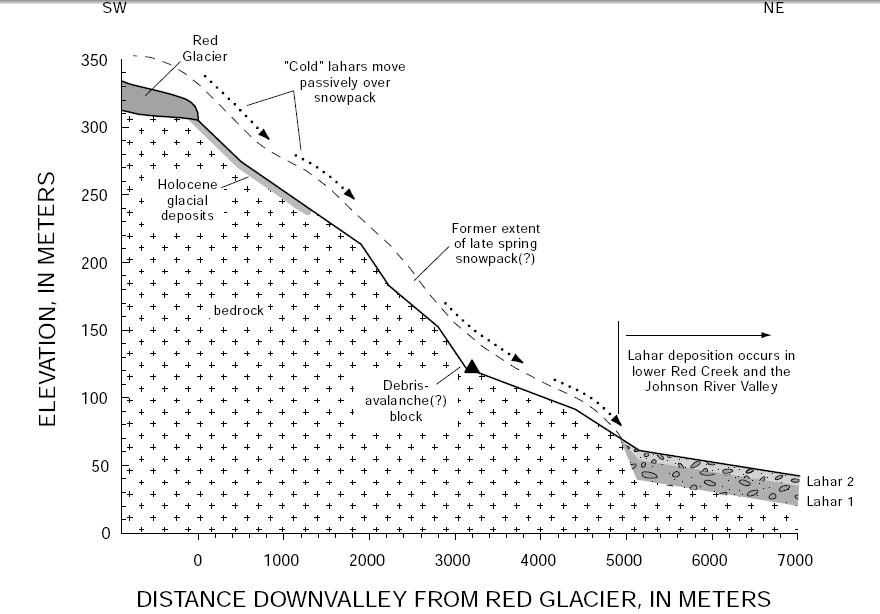
The term lahar is taken from the Javanese language, simply meaning lava flow. This term is used by geologist to describe a sub-aqueous volcaniclastic debris flow. There are some parts of the world that use the term lahar to describe a sub-aerial volcaniclastic debris flow {cite Field guide}. A lahar deposit is a subtype of epiclastic deposits which is formed from a mudflow, or a debris flow. Lahars may be of any temperature from scalding hot at the time of an eruption to the surface temperature where it has accumulated {cite field guide}. Lahar flows are created when unconsolidated material (mostly ash) is heavily saturated with water, from a volcanic eruption that mingles with a nearby body of flowing water (a river, snowcap, melting glacier, etc.) or from heavy rainfall. This type of flow (hyper concentrated flow to debris flow) is considered a non-Newtonian fluid, which is extremely turbulent {Walton, 1988}. Lahar flows can be so voluminous that they are composed of more material than all other volcanic byproducts combined.
A lahar flow can occur any time there is enough liquid to move unsolidified volcanic debris. This could be caused by a heavy rain, a lake wall breaking, or even from a melting snowcap during (or just after) an eruption. Unlike most lava flows, lahars move exceedingly fast (some have flowed at speeds of 40mi/hr), making them next to impossible for people to outrun { (Davila, Capra et al. 2007) }. The chances of being caught in a hot, eruption related, lahar flow is smaller than the chances of being caught in a cool lahar flow. Around dormant volcanoes however, there is a greater danger of unrecognized potential for lahar flows.
It is important to understand lahars not only to reduce the loss of life, but also to locate ancient volcanoes. Lahars tend to form around their host volcano and contain enough volcanic material that the type of lava flow can be inferred. The cohesiveness of the rock and the degree of hydrothermal altered rocks within the bed can determine the flow’s nature and the type of volcano from which the flow originated. The topography of the area and the general layout can be intuited from the flow direction and thickness of lahar deposits, for the distance that the lahar flow traveled the volcano is proportional to the gradient of the slope of the volcano and the amount of liquid present in the flow (Lavigne and Thouret 2003).
(Waythomas et al, 2000)
In some rare cases, fossilized remains of petrified trees and even mammoth bones have been discovered in lahar deposits. Of the volcaniclastic deposits, lahars are the most likely to contain fossils (mostly flora), though it is hard to determine their age due to the nature of sedimentary deposits.